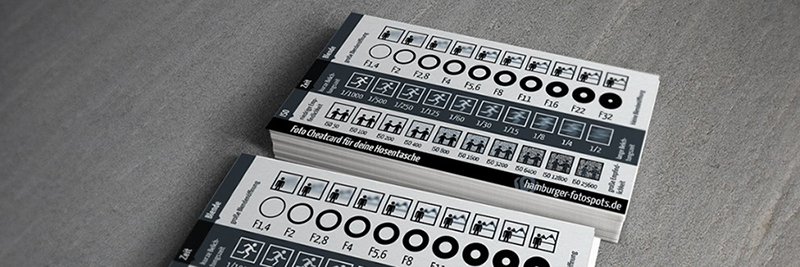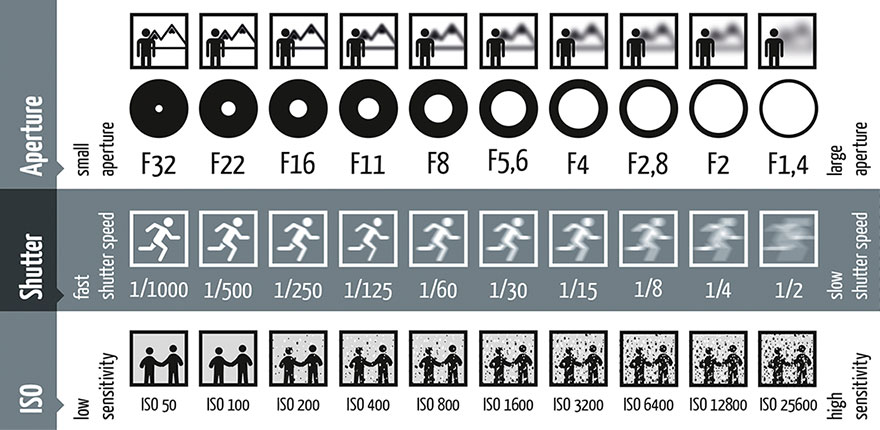Nifty Little Photography Reference Card
Oh, this is so lovely! Daniel Peter has created a great little visual representation of aperture, shutter speed, and ISO for photography beginners. It’s represented simply enough that it can be printed on little business cards and kept handy for reference.
And he’s made it free for the download at Fotoblog Hamburg.
This is great. It illustrates the narrowing and widening of depth of field as the aperture is widened and narrowed, along with the F stops associated with that widening and narrowing. It illustrates the blurred motion that comes from a slow shutter speed, along with examples of those numbers as well. And it also highlights the increased graininess from using higher ISO film, or digitally a higher ISO setting.
These are your big three settings within a camera. Externally (assuming you’re using an SLR camera) you have what type of lens you use, and of course, what’s in front of that lens. But these are the choices that you make about how your camera takes in light. First you have to get enough light to make an image. And in a low light setting, you can do that by opening the aperture to allow more light to come through while it is open. You can also slow down your shutter speed to allow more light to come in by giving it more exposure time. Or you can shoot with a higher ISO which means using a more light sensitive film or setting. Back in the film days, the graininess that came with higher ISOs was due to there being larger bits of the light sensitive silver halide crystals to soak up more of the light for the exposure it was given. I found this SEM image of them online, though there wasn’t a photographer listed to credit. But traditional film contained these little guys, and the film that had big pieces of them soaked up more light, and also appeared to be more grainy. But the film with smaller pieces, would require more light for a well exposed image, but would then appear more crisp.
I’m a little behind the curve of how the digital translation of those crystals works. But the same principles apply today in digital photography.


